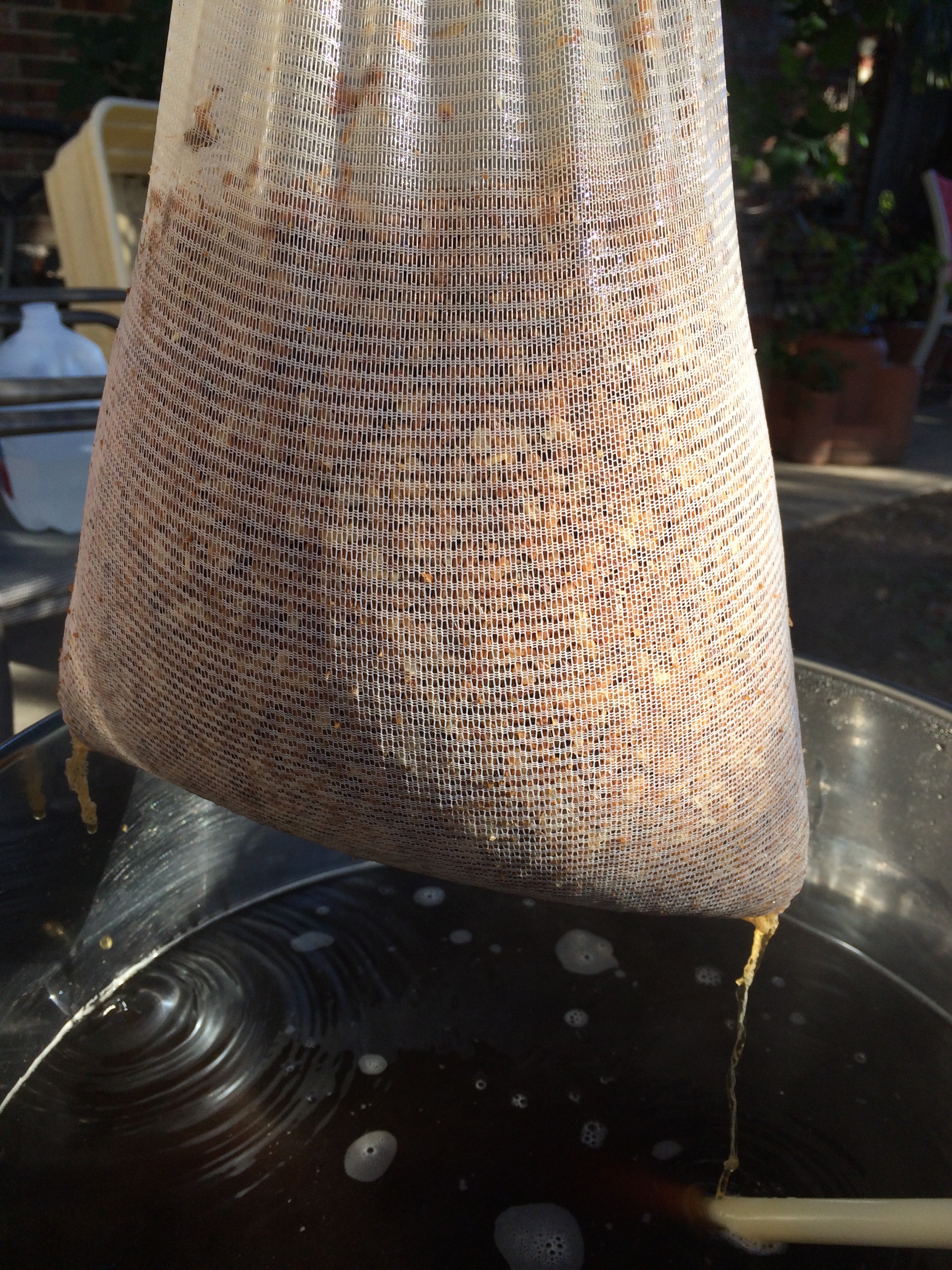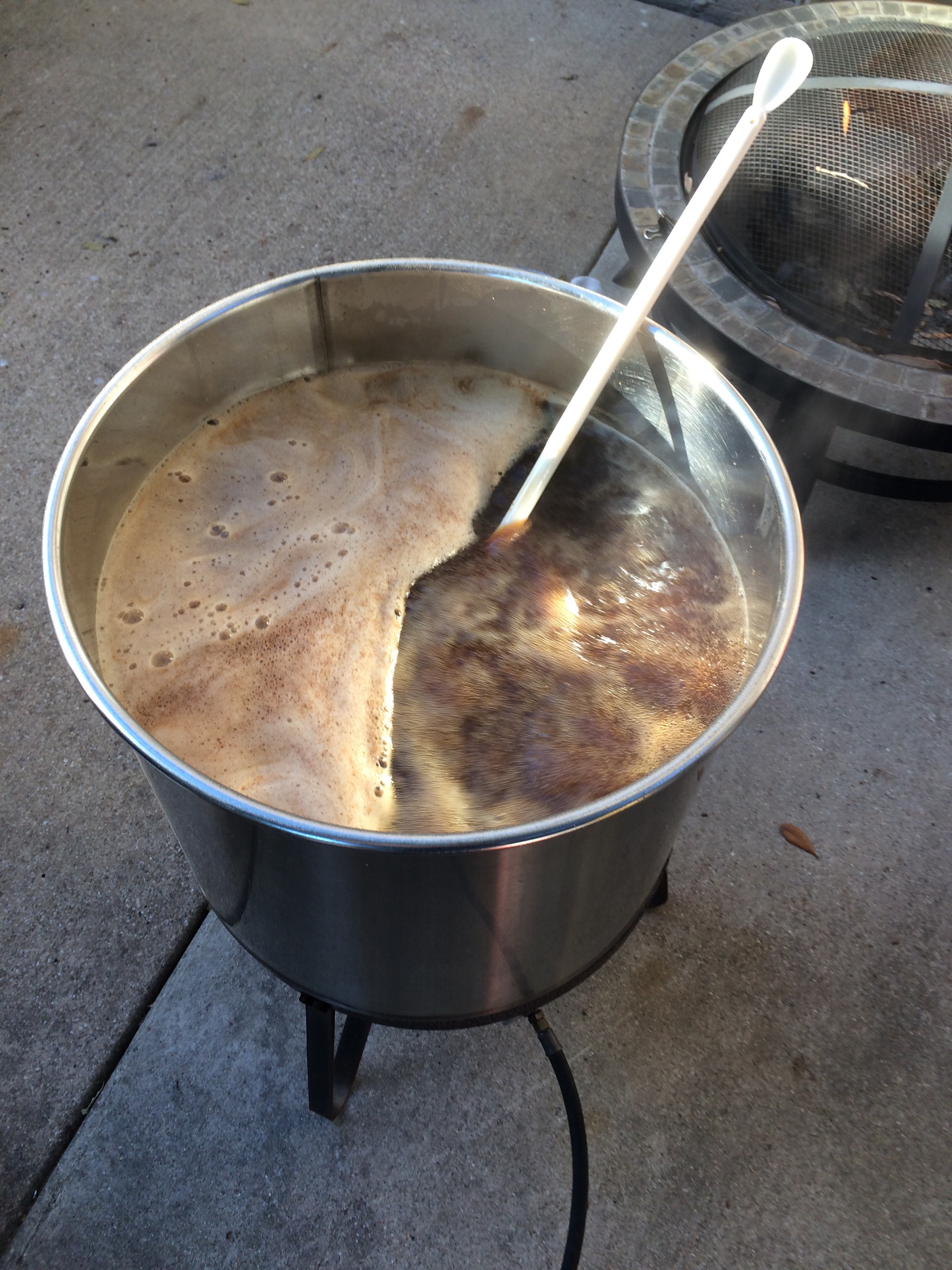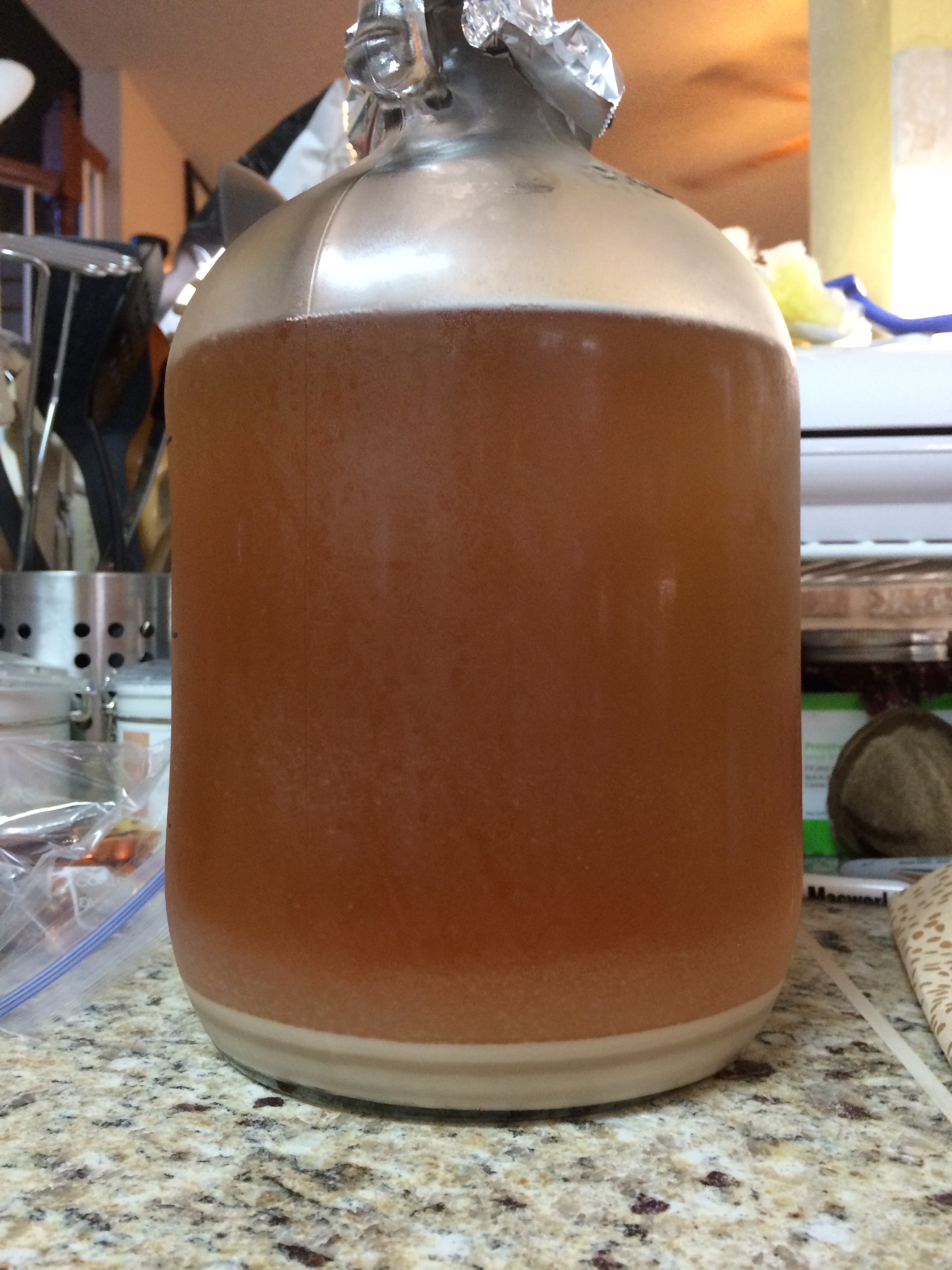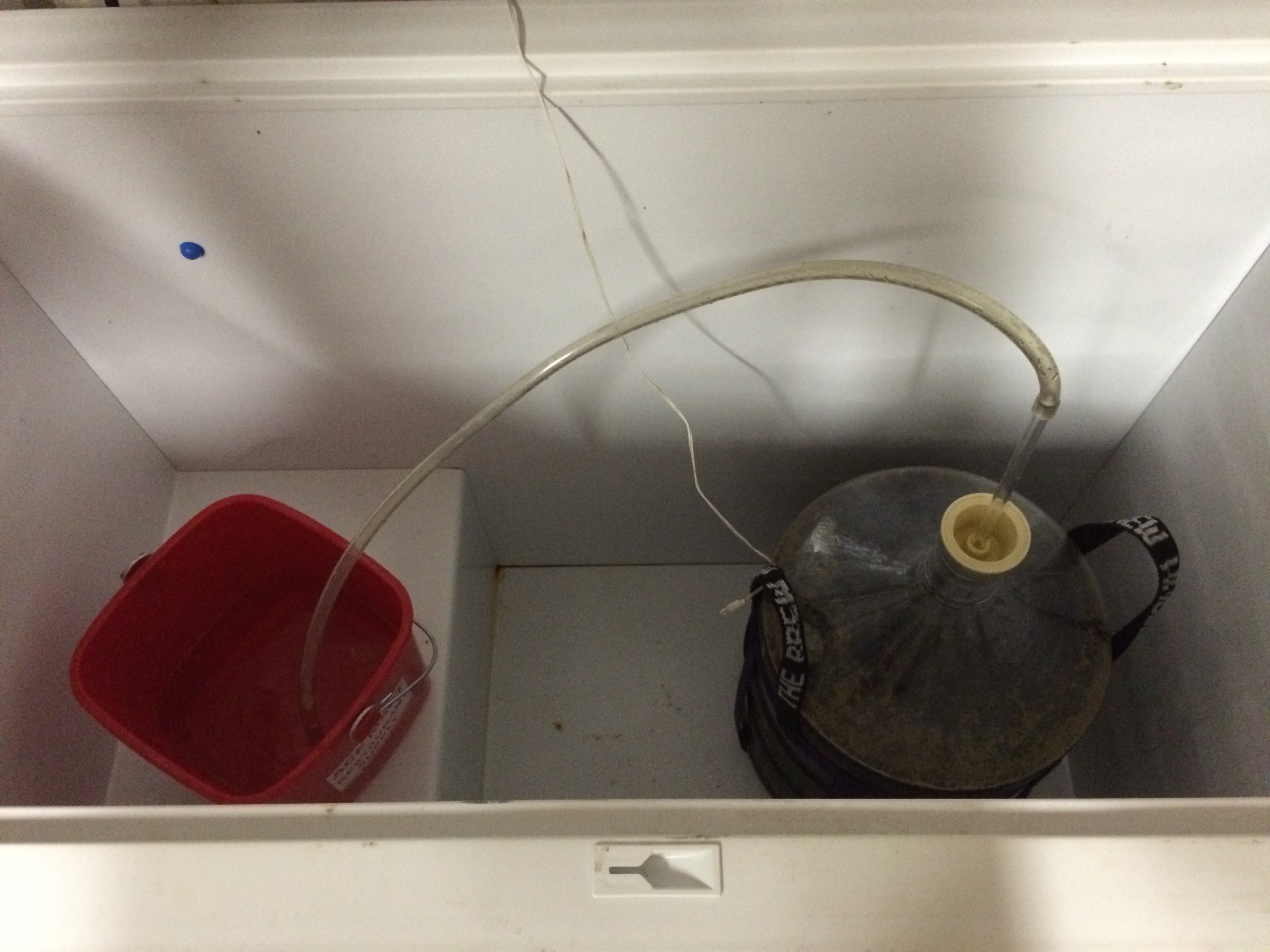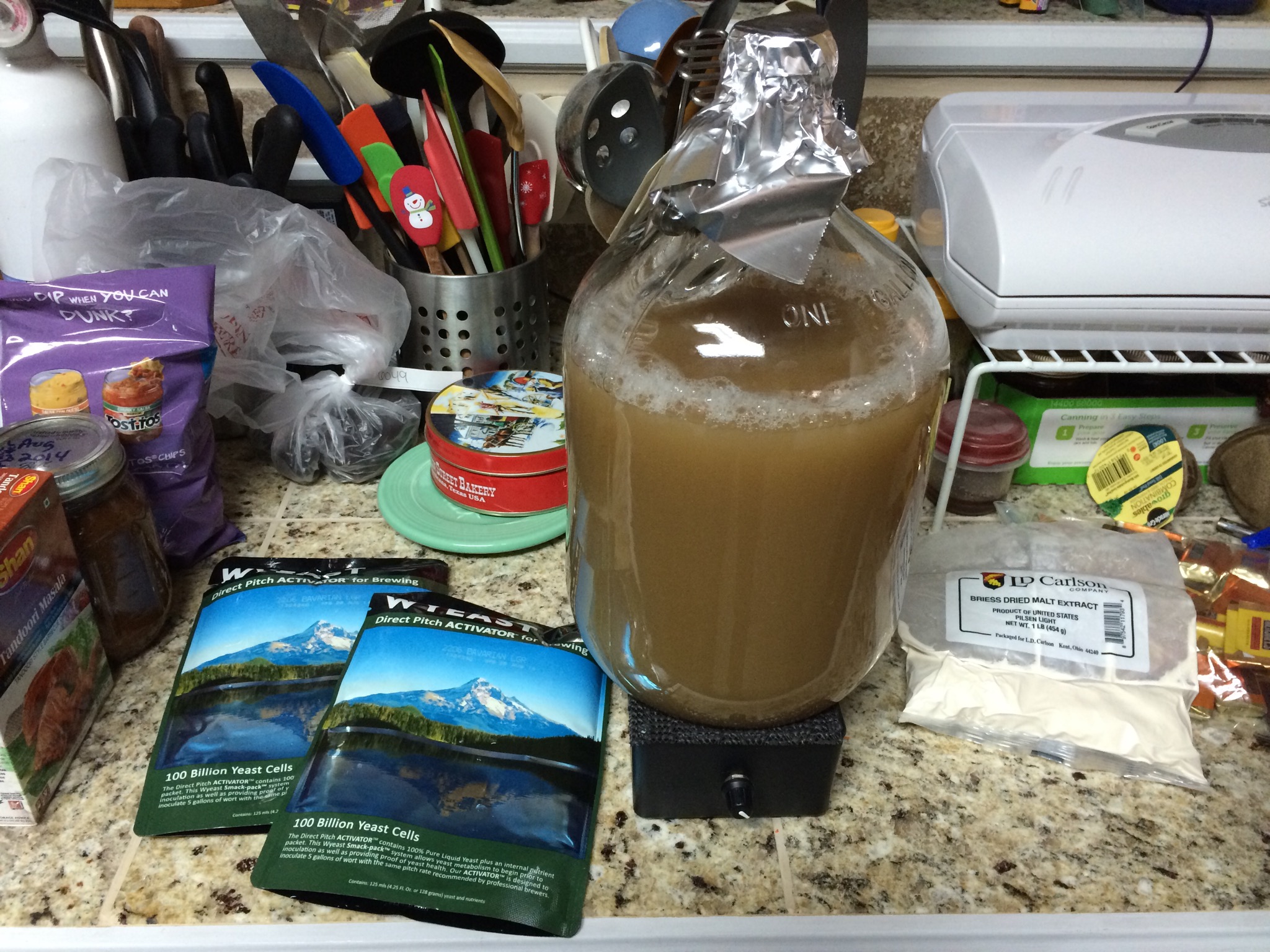My son was in town for Christmas, so we got busy lagering the doppelbock. The first step was to wash and sanitize everything we’d need. This included a carboy, auto-siphon, airlock, and testing equipment.
Once the equipment was ready to go, we pulled the full carboy out of the freezer, set it on the lid, with the empty one on the floor right below it, and started the auto-siphon. It took a few minutes to drain, with a small interruption to put some of the beer in a testing cylinder.
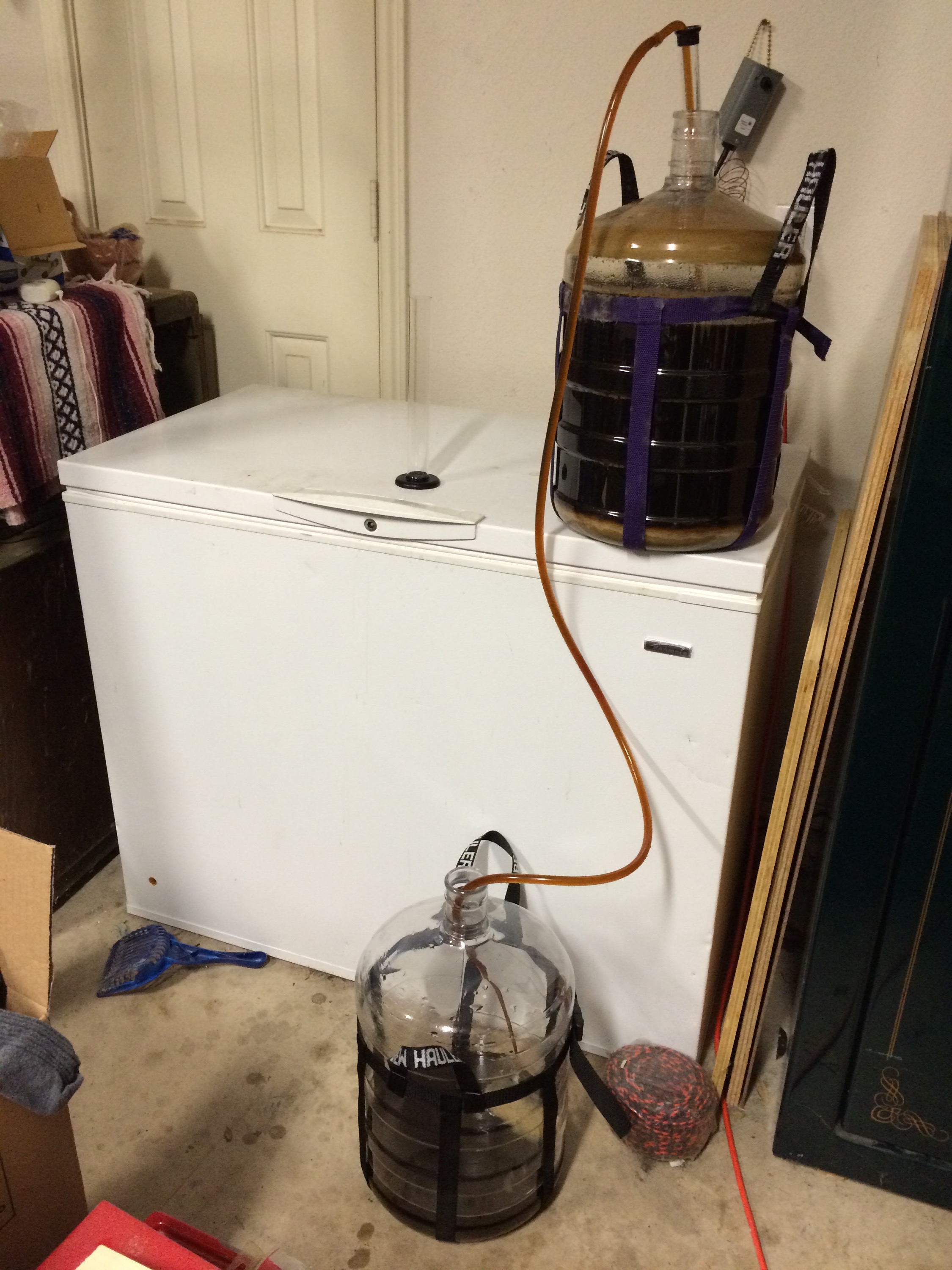
After it was all transferred to the new carboy, I put that one back in the freezer, put the airlock on, and filled it with vodka to keep the bad bugs out. I then set the temperature controller to 34 degrees and we went inside to get the specific gravity reading done.
At this point the beer has quite a bit of CO2 dissolved in it, so you have to do something to get it out. Shaking it works, but be careful because you can make a real mess if you’re not careful about keeping the cylinder covered. Trust me, your significant other, landlord, pets, kids, parents, and friends will appreciate not getting beer all over the place.
For measuring specific gravity once you’ve got alcohol in the solution, you can use a refractometer and some math to get the final gravity, but it’s just easier to use hydrometer readings. I’ve got a set from Northern Brewer that includes one with a high resolution scale for finishing gravity. It’s so much easier to get accurate gravity readings with them than it us using the one-size-fits-none hydrometer that comes with most brewing kits. Go buy a set now, if you don’t have one already.
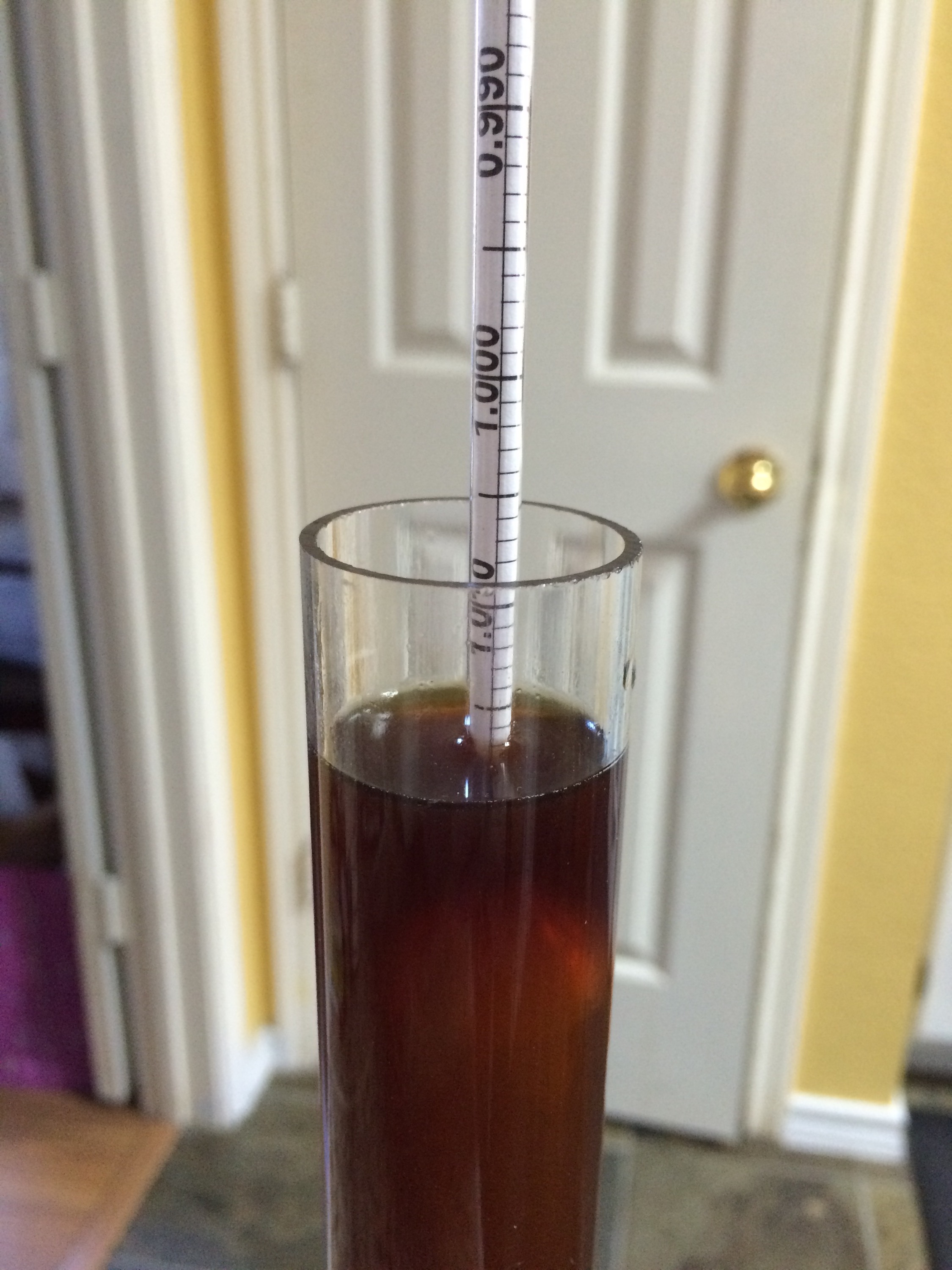
My finishing gravity came in within one point of where the software predicted that it’d be. And I got to taste the beer in the test cylinder. It was delicious! I’m going to call that a win. So now the beer’s lagering until at least the end of January when it will be kegged and put on tap.
